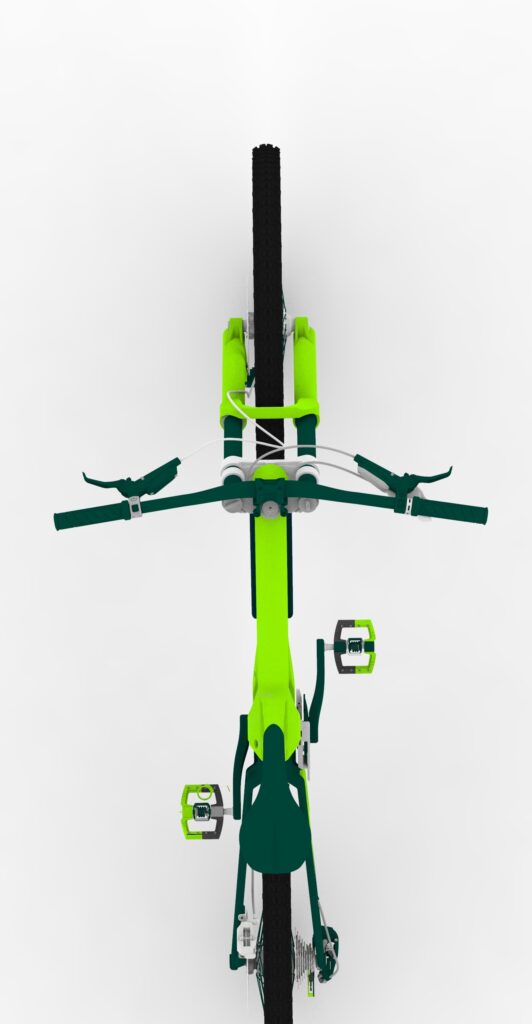E-Bike Concept
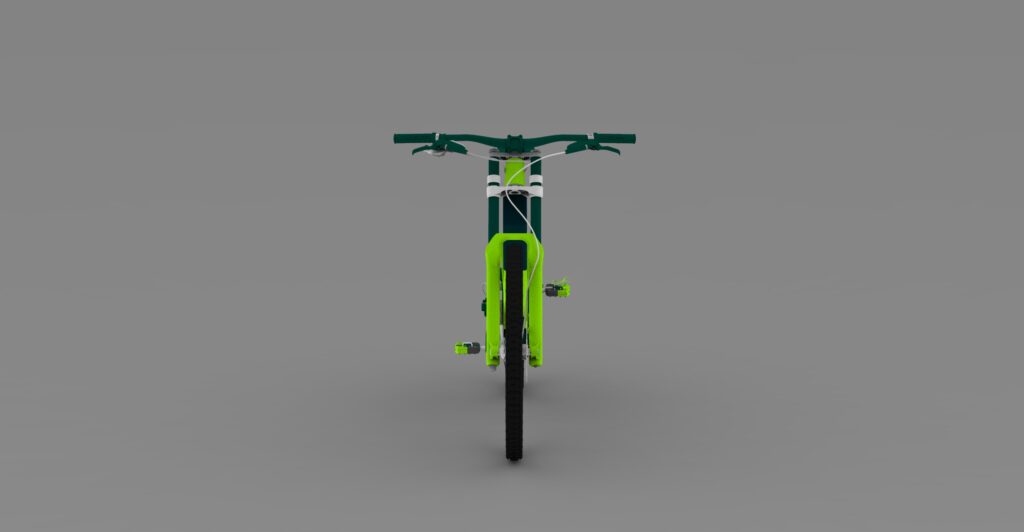
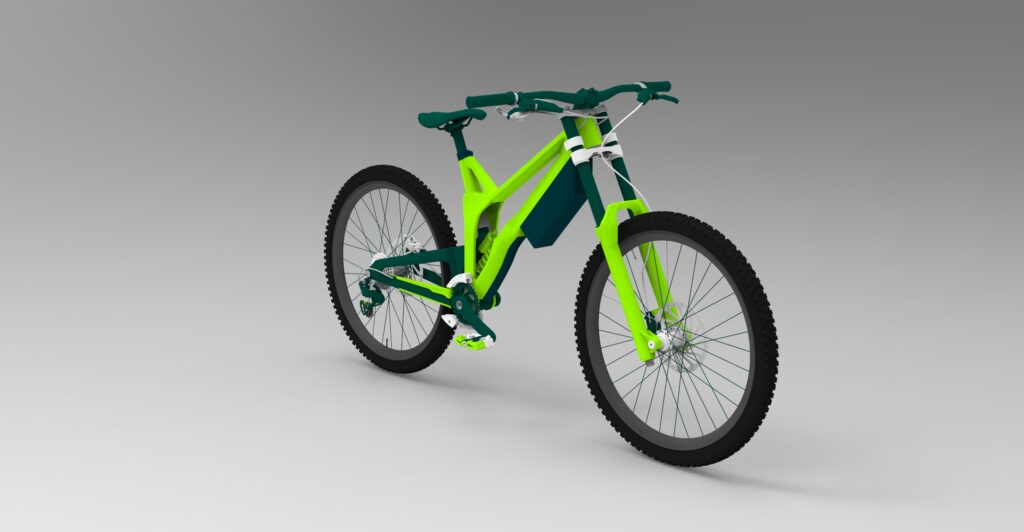
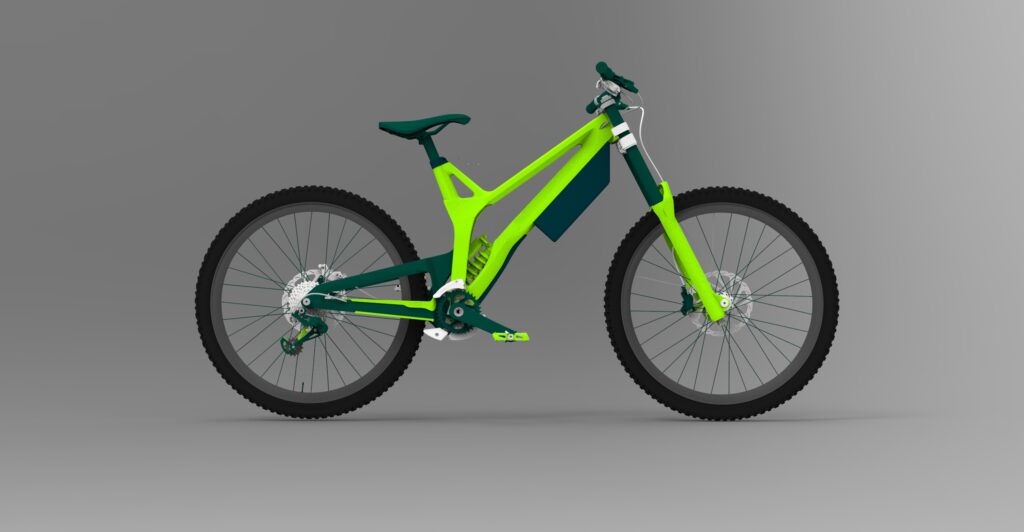

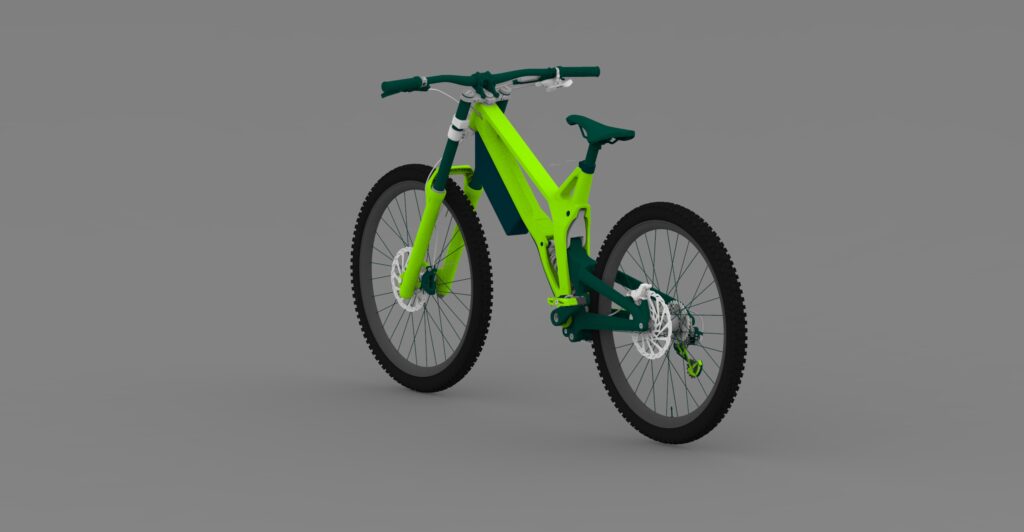
Frame and Body
• Material: The frame is constructed from high-modulus carbon fiber, utilizing an advanced layup process to optimize strength-to-weight ratios and aerodynamics. The organic, flowing shape not only reduces drag for enhanced speed but also contributes to the bike’s aesthetic appeal.
• Manufacturability: Carbon fiber’s moldability allows for complex shapes that can integrate the battery and motor system within the frame, maintaining a streamlined profile. However, the manufacturing process requires specialized equipment and skilled labor, which could increase production costs.

Integrated Battery and Motor System
• Design: The battery and motor are ingeniously concealed within the bike’s frame, contributing to a sleek and uncluttered appearance. This integration also aids in protecting the components from environmental elements and potential damage.
• Manufacturability: Integrating these systems within the frame complicates assembly and maintenance but can be addressed through modular design practices. This approach allows for easier replacement or upgrades of the battery and motor system without significant disassembly of the bike frame.

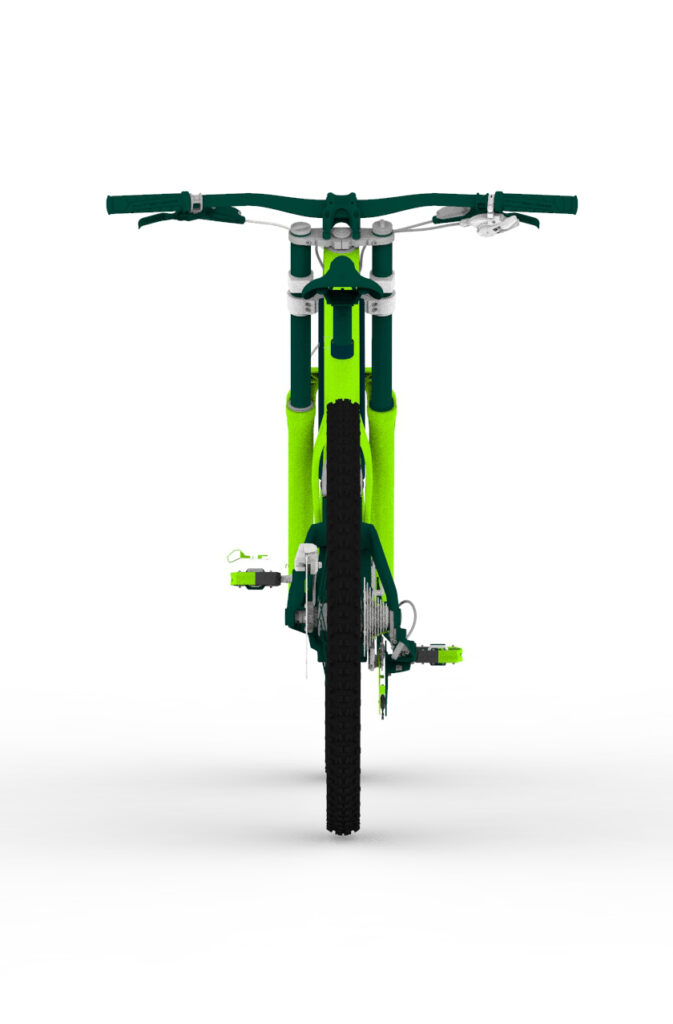
Control and Connectivity
• Features: The bike includes touch-sensitive handlebars for intuitive control over speed, navigation, and lighting. Smart connectivity features such as GPS tracking, anti-theft systems, and performance monitoring are accessible through a companion app.
• Manufacturability: The inclusion of touch-sensitive controls and connectivity features requires precise engineering and integration of electronic components. While this adds complexity to the manufacturing process, the growing availability of compact electronics and wireless technologies makes it feasible.
Wheels and Suspension
• Material and Design: The wheels are made from a flexible, puncture-resistant material that adapts to road conditions for optimal grip. An advanced suspension system ensures a smooth ride across varied terrains.
• Manufacturability: Manufacturing flexible, durable wheels requires innovative materials science and production techniques, potentially increasing costs. The suspension system’s complexity may also pose challenges but can be mitigated by adopting existing technologies and adapting them to this application.
Safety and Lighting
• Adaptive LED Lighting: The bike is equipped with adaptive LED lighting that adjusts brightness and pattern based on environmental conditions, enhancing visibility and safety.
• Manufacturability: LED technology is well-established and can be easily integrated into the bike’s design. Adaptive functionality can be achieved through software controls, requiring minimal additional hardware.
